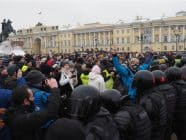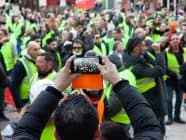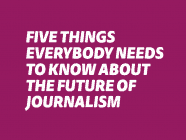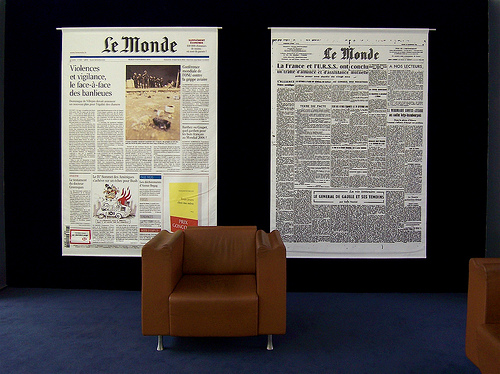In modern foreign news reporting a ‘fixer’ is becoming as essential to the journalistic process as a foreign correspondent. Without a fixer – a local person hired to help with logistics, contacts and translation – the correspondent may fail to access the people, places, events or new information required to produce news reports.
Recent international studies have increasingly problematized the cooperation between correspondents and their fixers. They focus on how the fixer, as the correspondent’s eyes and ears, often collects local information on their behalf. This has led to a discussion about how a biased fixer could provide correspondents with selective or wrong information, which might then be reported as objective fact. However, my research suggests that the fixer and the correspondent should be considered equal, and their relationship as mutually influential.
The study – for my PhD at Roskilde University – clearly points towards rejecting the idea of the fixer as a disrupting layer between correspondents and reality. Instead, it finds the fixer can provide the foundation for the correspondent’s report.
To understand the fixer’s role I examined the gap between what news is, and how news is made. Focusing on news production in the Middle East, I spent five months with Danish TV and press correspondents in Israel, Jordan, Lebanon, Tunisia and Turkey, and one month in editorial offices. Data-collection was based on participant observation and 25 long, semi-structured interviews.
Foreign correspondents are now expected to file more stories than ever before
With 24-hour deadlines to meet, foreign correspondents are expected to file more stories and do more live, on-the-spot reports than ever before. ‘Presence’ and ‘immediacy’ have also become essential. This leaves journalist, often new to the country, with less time to become familiar with the story, or build contacts before they report it. As a result the fixer has become an integrated part of the selection, formulation and performance of the correspondent’s work.
A small example from the fieldwork might illustrate this point: A Danish TV-correspondent rushed to Antakya in Turkey to be near the Syrian border when the fighting in the Syrian city, Idlib, was about to start. He got from Beirut to Antakya in just half a day, arriving late in the evening. The fast movement clearly gave him great satisfaction.
The fighting started and without talking to anyone except a contact in Beirut, plus Internet research, he did five live-updates to a Danish broadcast corporation, explaining the situation “just behind these mountains” as he formulated it.
Around four in the afternoon the live-updates faded out and the correspondent decided, together with his cameraman, to go to the border, so they could talk to some Syrian refugees and make a feature for the evening bulletin.
Correspondents often rely on information provided by a fixer for their news reports
But they did not know the way or the language of either the locals (Turkish) or the refugees (Arabic). They had read about refugee camps in the area but had no local knowledge of how to get there or how to get in contact with the Syrian refugees. Also, on a very practical level, they did not have either a car or a driver.
An older man from the hotel, hired on the spot as their fixer for the day, solved all their problems. He took the correspondent and the cameraman on an hour’s drive, to a small village near the border. He took them behind one house and another and through something which looked like a front yard covered with boulders before he found a small staircase between two buildings, leading up to a flat roof of a garage. From here they saw a road, which wound up at the foot of a hilly countryside. On top of a hill there was a cluster of buildings with fences around them, and along the road more green towers were located. In the background higher hills raised, almost like mountains.
“The road is the border,” the fixer proclaimed, “and on the other hand, Syria”. There was no activity at all. There was no visible military, no vehicles, no guards, no soldiers, no fence. Only the towers along the road indicated that this was a border. The fixer raised his left arm and pointed towards the far off hills. “Here run refugees in the cover of night. From up the hills and down through the woods,” he said. “Not so many come any more. Several were shot while trying to cross the border.”
The cameraman put the camera on his shoulder and filmed the road and the landscape. He asked the fixer again, if refugees really had been shot right here. “Yes,” he was assured.
A few minutes later the correspondent was ready in front of the camera – telling what he had learnt from “people in the region”.
The fixer plays a critical role in the production of foreign news
This scenario was characteristic. Foreign correspondents arrive in Tunis, Beirut, Cairo, Antakya speaking no, or very little, Arabic or Turkish, and they have neither the historical background nor the vast social network essential to doing work in these societies. The fixers (often hired on the spot from a hotel, or via more formal relationships) therefore operate as translators, drivers and guides. They “fix” stories, selecting people with whom reporters should speak, setting up interviews, and most importantly, leading the way through territory unfamiliar to the foreign correspondents.
In other words the fixers play a critical role in the production of foreign news. They are not just the correspondents’ eyes and ears; they bring valuable skills to the correspondents’ work. Their work often forms the foundation for the correspondents’ reports.
If we want to understand the foreign news product, we should look deeper into the journalistic and cultural meeting between foreign correspondents and their co-creators, the local fixers.
Reference: Skrubbeltrang 2014, “From Eye-witness to I-witness, Anthropological perspectives on Danish correspondents in the Middle East” (in Danish), PhD dissertation, Roskilde University.
Pic credit: flickr.com Balazs Gardi and Frontline Club Fixer’s Fund
Tags: Fixers, Foreign Correspondents, Journalism, Middle East, news production, Research














































